Key Takeaways
-
Bumblebees prefer hidden nesting sites: Common locations include underground burrows, dense grass, tree stumps, and even quiet man-made spaces like attics or sheds.
-
Colonies are small and temporary: Unlike honeybees, bumblebee nests host only 50-400 bees, lasting from spring to late fall.
-
Non-aggressive pollinators: Bumblebees rarely sting unless provoked, making coexistence generally safe and beneficial for homeowners.
-
Minimal intervention is best: Unless nests pose a significant disruption or health risk, it’s best to leave them undisturbed as colonies naturally disperse by winter.
-
Prevention and relocation: Homeowners can discourage nesting in unwanted areas through preventive measures or professional relocation, but these options should only be considered when necessary.
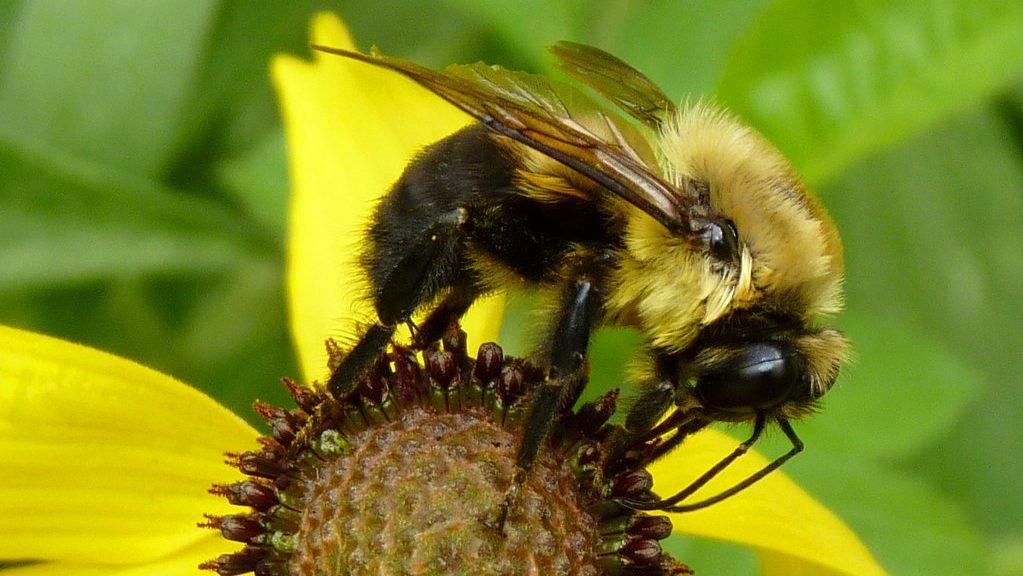 Bumblebees are one of the most important pollinators in North America, playing a crucial role in the reproduction of flowering plants and crops. Unlike honeybees, which form large, long-lasting hives, bumblebee colonies are small, temporary, and well-hidden. Understanding where bumblebees nest can help homeowners appreciate these beneficial insects while managing potential nests on their property safely and responsibly.
Bumblebees are one of the most important pollinators in North America, playing a crucial role in the reproduction of flowering plants and crops. Unlike honeybees, which form large, long-lasting hives, bumblebee colonies are small, temporary, and well-hidden. Understanding where bumblebees nest can help homeowners appreciate these beneficial insects while managing potential nests on their property safely and responsibly.
This guide explores the nesting habits of bumblebees, the most common nesting locations, what their nests look like, their seasonal nesting patterns, and how to handle a bumblebee nest near your home.
Common Bumblebee Nesting Sites
Bumblebees aren’t builders like honeybees—they don’t spend time crafting intricate hives. Instead, they’re resourceful nesters, always on the lookout for cozy, ready-made hideaways that offer just the right mix of shelter, insulation, and safety from predators. Whether it’s an abandoned burrow, a quiet corner of your shed, or a patch of thick grass, bumblebees will settle and stay wherever they find their perfect mixture of warmth and protection, which will help in their future. Here are some of their favorite nesting spots: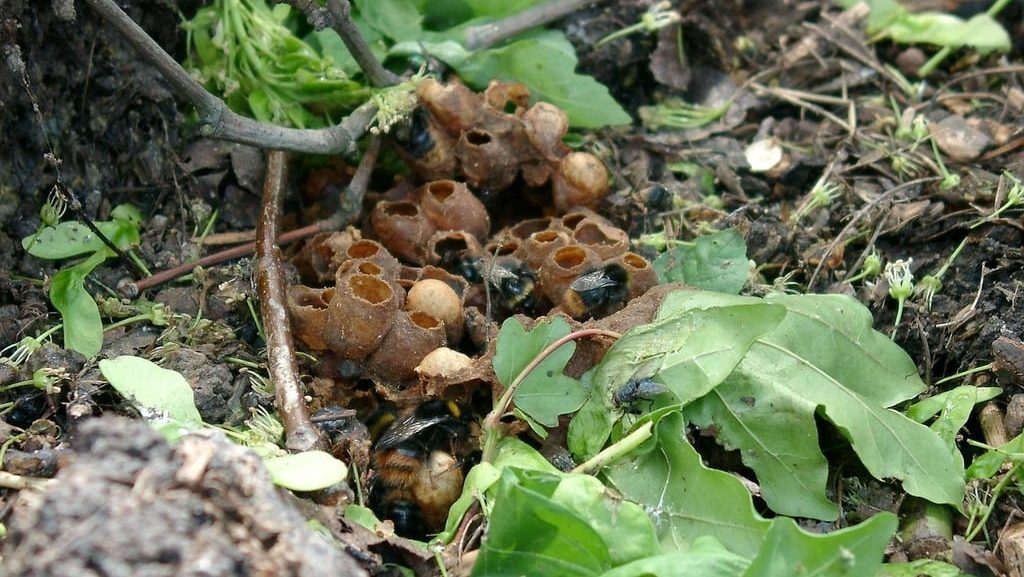

Not getting a solution?
Get your free pest control estimate today!Underground Nests
The most frequent nesting spots for bumblebees is abandoned rodent burrows. Mice, chipmunks, and other small mammals leave behind holes and tunnels, which bumblebee queens find ideal for nesting. These underground nests provide insulation and protection from harsh weather and predators.Underground Nesting Locations
-
Gaps under patios, decks, or sheds: Bumblebees may nest in hidden crevices beneath outdoor structures.
-
Spaces beneath piles of wood, compost heaps, or mulch: These undisturbed areas provide shelter and warmth for nests.
-
Areas along fence lines with undisturbed soil: Loose, quiet soil near fences can be an attractive nesting spot.
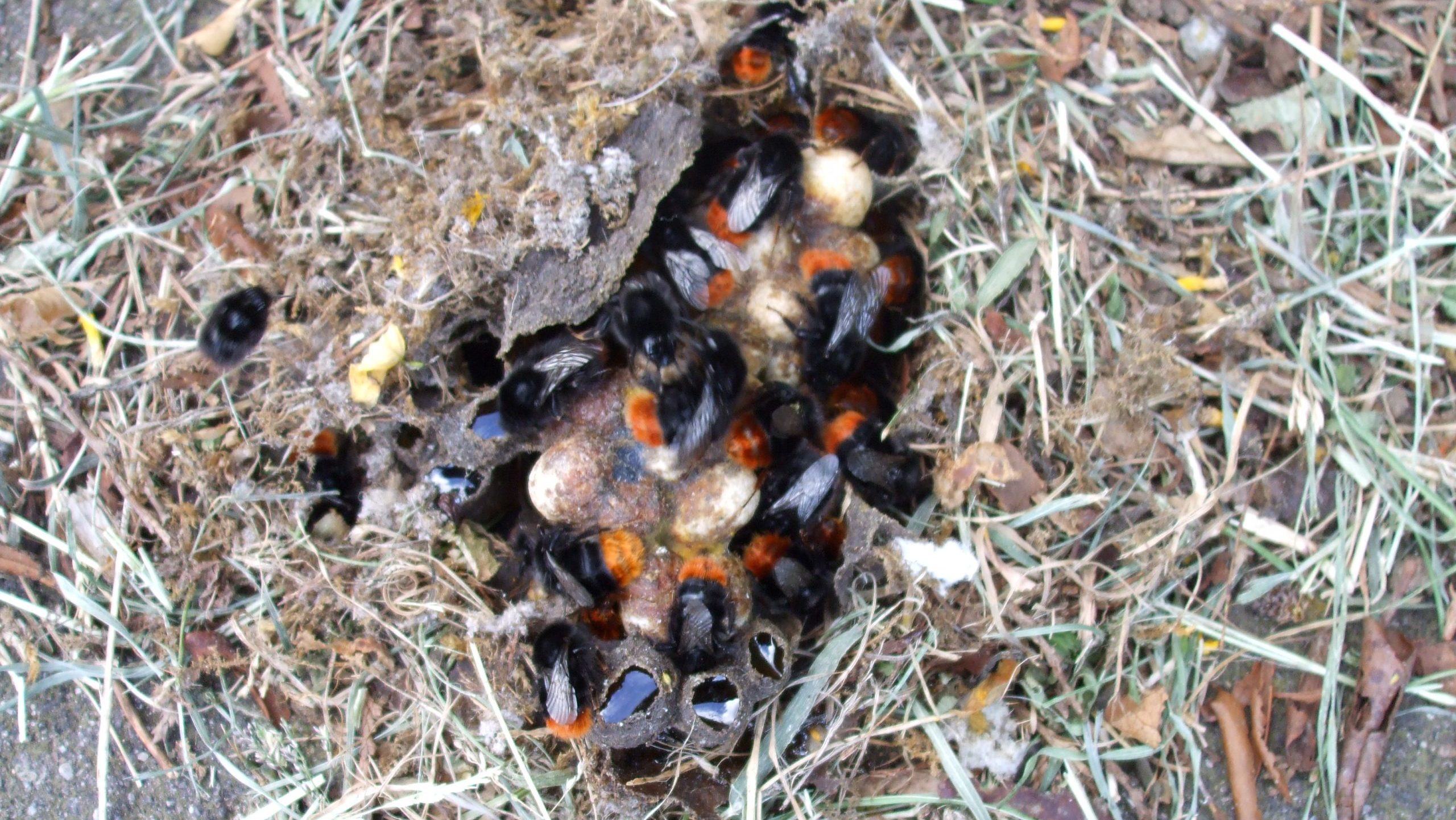
Surface-Level Nests in Grass and Vegetation
Some bumblebee species prefer to nest on the ground, hidden beneath thick grass, leaves, or small piles of organic material. These nests may be difficult to spot because they blend in with the natural environment.Surface Nesting Locations
-
Thick tufts of grass in unkempt areas
-
Leaf piles or dense shrubbery
-
Straw or hay bales left outside
-
Old compost or decaying plant matter
Above-Ground Cavities
Though most bumblebees nest near or below ground level, some species prefer above-ground cavities in dry, dark spaces. These include: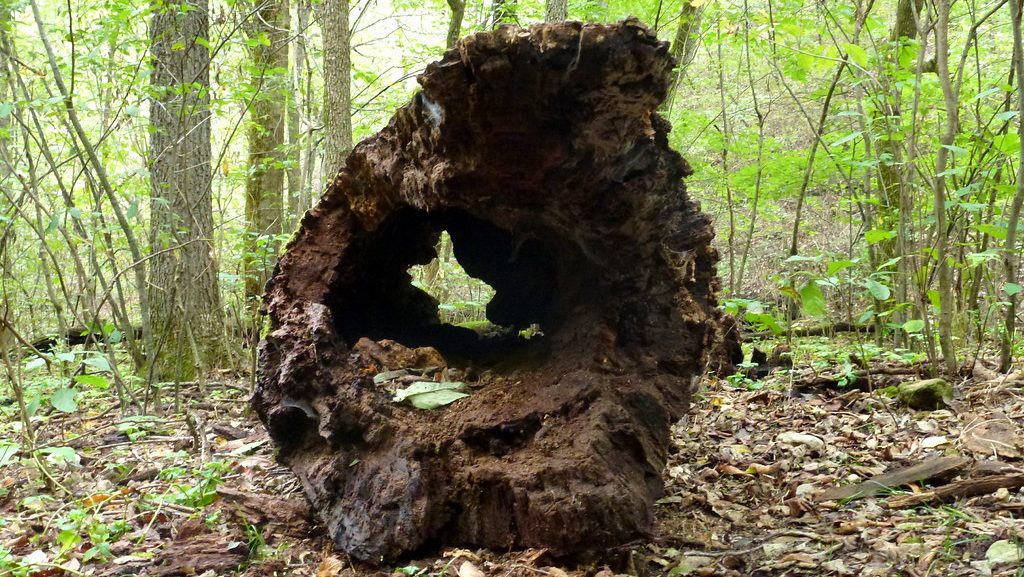
Hollow Logs/Rotting Wood
Bumblebees may nest in hollow logs, tree stumps, or decaying wood, offering them natural shelter.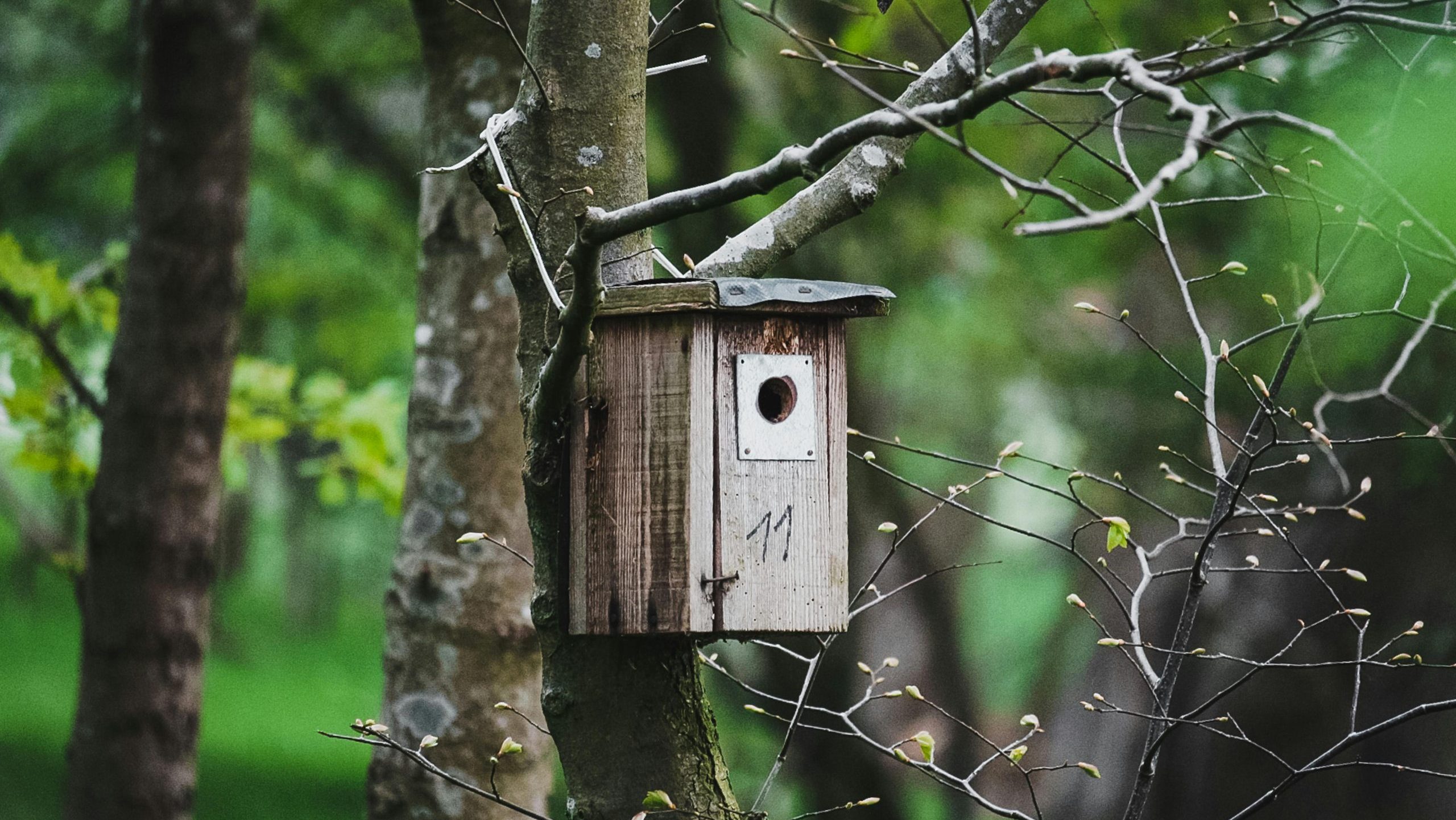
Birdhouses & Owl Boxes
Small cavities inside birdhouses or owl boxes can serve as ideal nesting spots for bumblebees.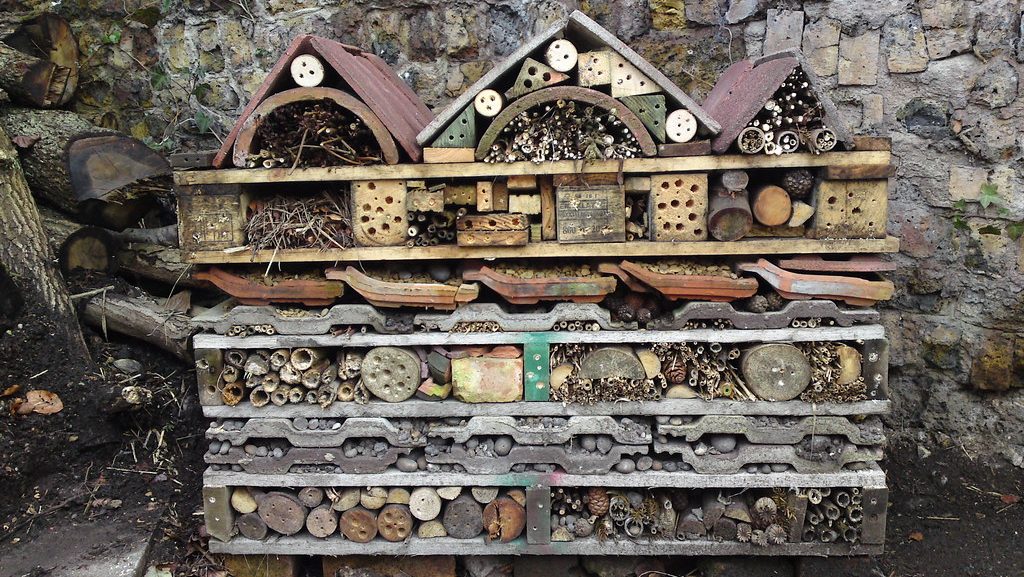
Rock Piles & Stone Walls
Gaps in stone walls, rock piles, or even old farm equipment can provide secure nesting spaces.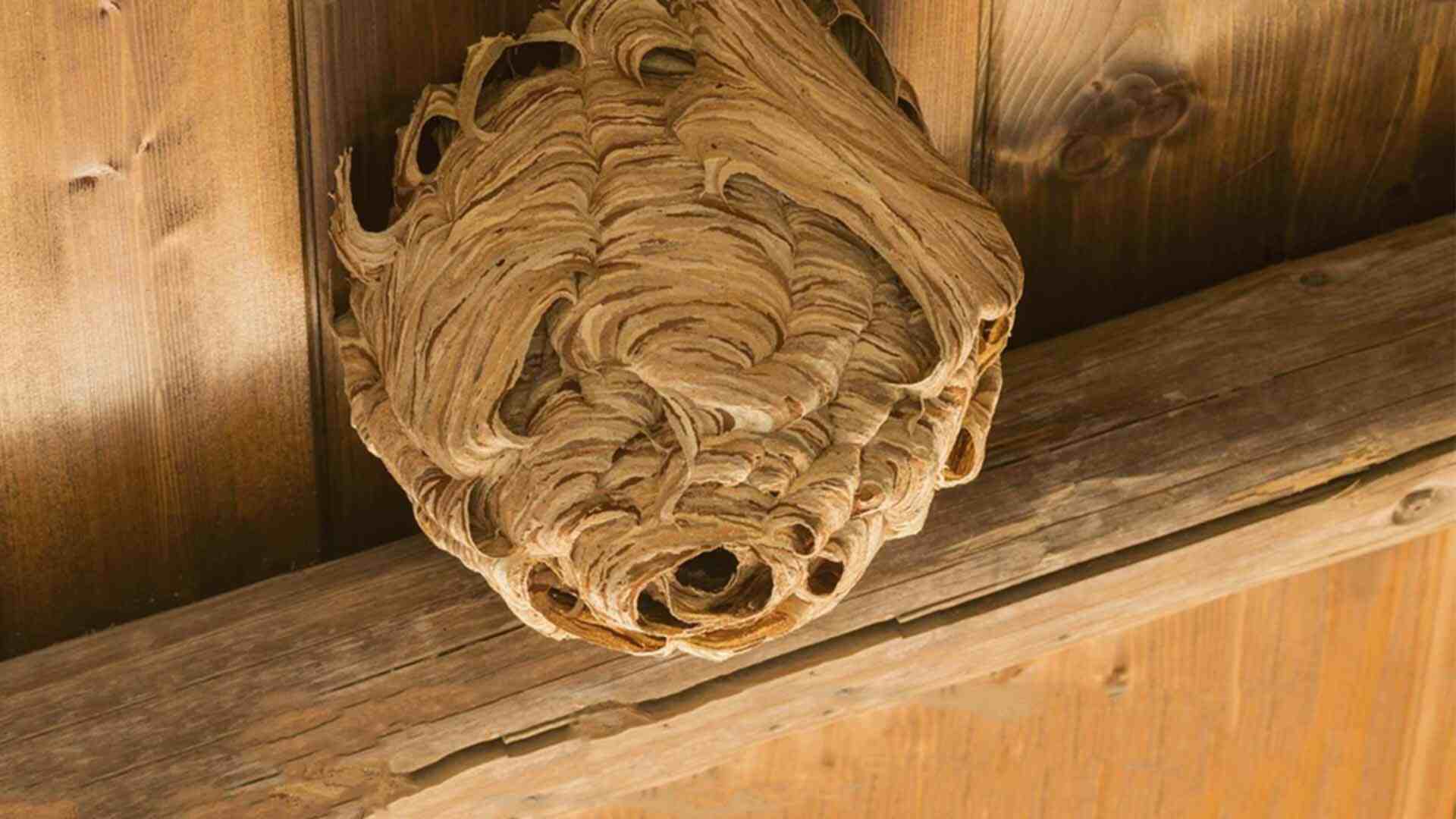
Wall & Attic Insulation
Bumblebees sometimes nest inside insulation in walls or attics, seeking warmth and protection.Man-Made Structures
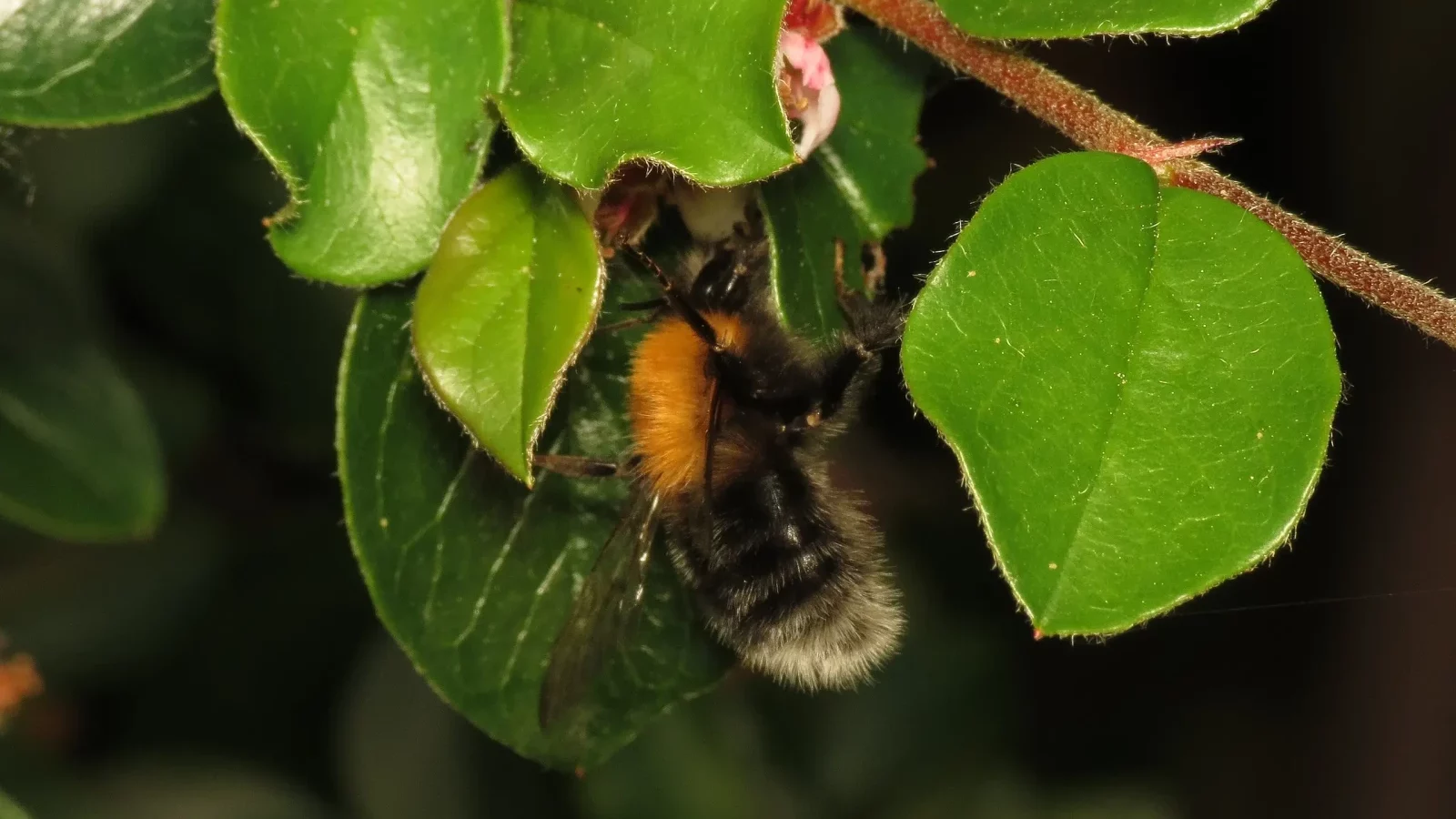 Bumblebees sometimes take advantage of human-made structures for nesting, particularly in quiet, undisturbed areas. They may settle in:
Bumblebees sometimes take advantage of human-made structures for nesting, particularly in quiet, undisturbed areas. They may settle in:
- Outdoor furniture cushions
- Piles of stored garden tools, tarps, or fabric
- Open-ended pipes or tubing
- Crawl spaces or attic vents
Inside a Bumblebee Nest: Structure and Appearance
A bumblebee nest is much different from a honeybee hive. Rather than building neat hexagonal honeycomb structures, bumblebee nests are loose clusters of wax-covered brood cells that look irregular and disorganized. These cells house larvae and pupae and are often surrounded by insulating materials like grass, moss, or animal fur.The entrance to a bumblebee nest is usually a small, unremarkable hole that might not be obvious unless you observe bees flying in and out. Unlike honeybee hives, which can house tens of thousands of bees, a bumblebee colony is much smaller, typically containing between 50 and 400 bees at its peak.
Unlike honeybees, bumblebees store very little honey in their nests, just enough to sustain the colony for short periods. Because of this, bumblebee nests do not become long-term fixtures in an area and naturally disband by late fall.
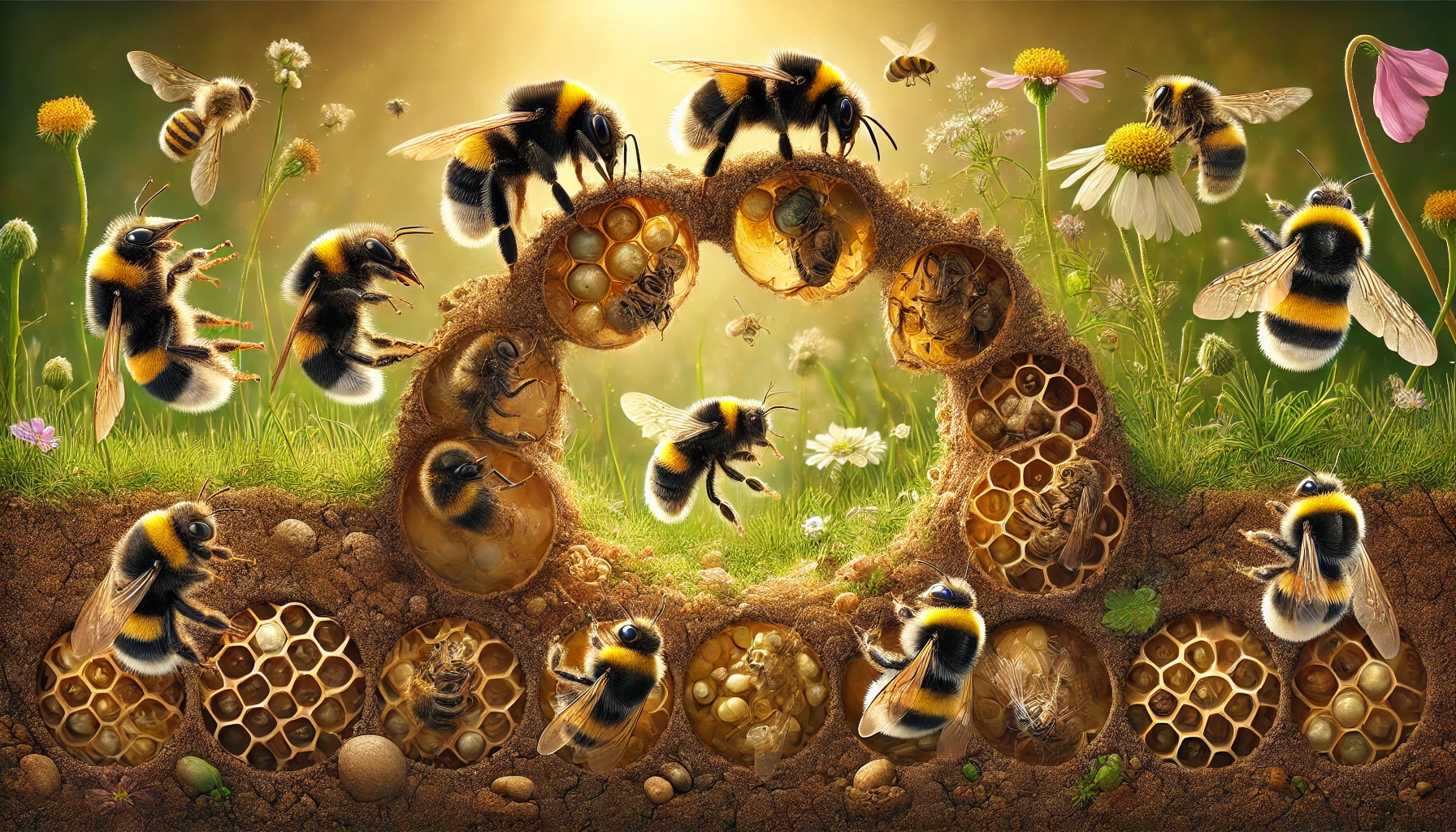
Seasonal Bumblebee Nesting Cycle
Bumblebee colonies follow an annual cycle, beginning in early spring and ending in late fall. Understanding this life cycle can help homeowners know what to expect if a bumblebee nest appears nearby.Spring: Queen Establishes a Nest
When temperatures begin to rise in March or April, newly emerged queen bumblebees wake from hibernation and search for a nesting site. These queens, which mated the previous fall, are the only survivors from the previous year’s colony. They begin their new colony from scratch, selecting a nest site and laying the first batch of eggs.During this time, queen bumblebees can often be seen flying low to the ground, zigzagging as they search for potential nest locations. If you observe a large, solitary bumblebee hovering around your yard in spring, it is likely a queen searching for a suitable nesting spot.
Summer: Colony Growth and Worker Bees
By late May and June, the queen has already laid enough eggs which will help to produce of worker bees. These new workers take over different tasks like foraging, feeding larvae, and maintaining the nest, allowing the queen to focus solely on egg-layinga and many more.During the summer months, bumblebee activity is at its peak, with worker bees frequently flying between flowers and their nest. The colony continues to grow throughout July and August, and by late summer, it reaches its maximum size of up to a few hundred bees.
Late Summer to Fall: Mating and Nest Decline
In September and October, the colony begins to produce new queens and male drones. These newly hatched queens will leave the nest to mate with males from other colonies before seeking out a sheltered location to hibernate for the winter. As temperatures drop, the colony naturally declines. The old queen, workers, and drones die off, leaving only the mated queens to survive the winter. The nest itself disintegrates, and bumblebees do not return to the same nest site the following year.What to Do If You Find a Bumblebee Nest Near Your Home
Bumblebees are not aggressive and rarely sting unless provoked. Unlike honeybees, they do not defend their nest aggressively, and their small colony size means they are not a major threat. However, if you find a nest in an inconvenient location—such as near a frequently used doorway or in a playground area—you may want to take precautions.Things to Consider
-
Leave the Nest Alone (Best Option): If the nest is not interfering with daily activities, it’s best to leave it undisturbed. Bumblebee colonies last only a few months and disperse naturally in the fall.
-
Mark the Nest Area: To prevent accidental disturbances, mark off the nest area with small fencing, cones, or signage—especially useful for homes with children or pets.
-
Redirect Traffic: If the nest is near a frequently used path or entryway, consider using an alternative route until the colony declines in late summer.
-
Encourage Nesting Elsewhere: Provide a safer nesting option by placing a bumblebee nest box in a quiet yard corner. This encourages bees to establish colonies in more suitable locations.
-
Prevent Future Nests in Problem Areas: If bumblebees have nested in an inconvenient spot, take preventive steps in late fall or winter. Seal gaps, fill rodent burrows, and remove debris piles to discourage future nesting.
Coexisting with Bumblebees
Bumblebees are gentle, essential pollinators that benefit gardens, crops, and wildflowers. By understanding their nesting habits and life cycle, homeowners can make informed decisions about managing bumblebee activity around their property. In most cases, bumblebee nests do not require removal, and with simple precautions, they can be left to complete their short seasonal cycle without issue. Respecting their role in the environment while ensuring household safety is the best way to handle bumblebee nests on your property.If you feel things have gone out of control, it is advised to contact pest control professionals. Our team can provide a customized approach to protect your home effectively. Visit our Species, Control, and DIY Guide sections for additional resources on bees and ways to tackle a bumblebee infestation.





